Syn.: Spiraea tianschanica Pojark.
Higher classification: Family Rosaceae, subfamily Spiraeoideae, genus Spiraea, section Chamaedryon (traditional but not monophyletic group)
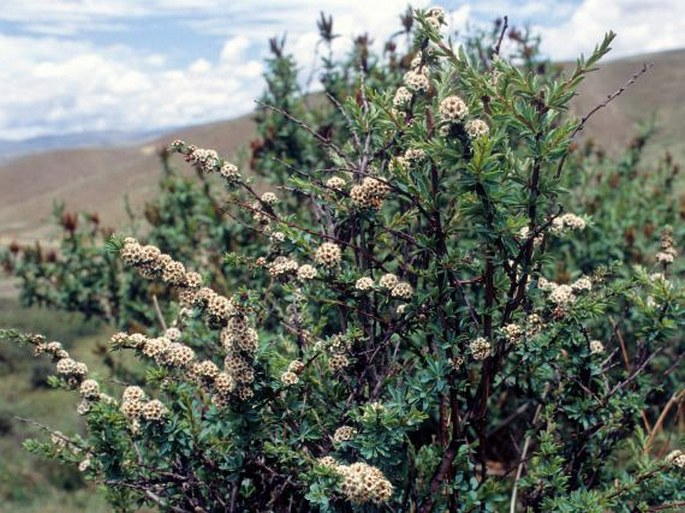
Distribution: In two geographic discontinuous areas. The northern area (with the northern limit at 56°N) extends across southern Russian Siberia and northern Mongolia from 120°E westwards across the Altaj mountain system in Russia, western Mongolia, the easternmost Kazakhstan and the northernmost corner of Xinjiang in China, to northern Tian Shan in southeast corner of Kazakhstan and central Tian Shan in eastern Kyrgyzstan. The southern area is situated almost only in the territory of the P. R. of China extending across the southern margin and eastern part of the Qinghai-Tibetan Plateau including the continuing northeastern to southeastern mountain ranges in Gansu and Sichuan; the disjunct populations occur in the Qin Ling and Daba Shan Mountains in southern Shaanxi; except for China, the area overlaps only Sikkim in the Himalayas.
Ecology: Open mountain forests and biotopes of the high mountain and alpine zone such as sparse shrubby-grassy slopes or thickets, mountain tundra, alpine meadows or pastures, open stony places, stream banks; generally from 600 to 4700 m asl. in dependence on the geographic latitude and local belts of vegetation.
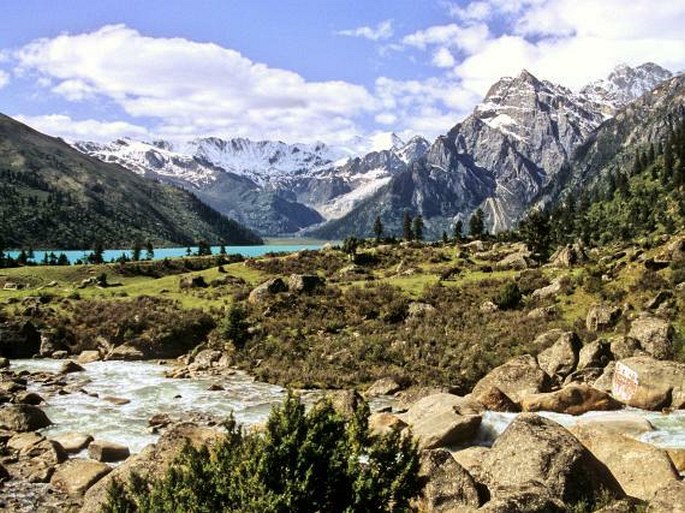
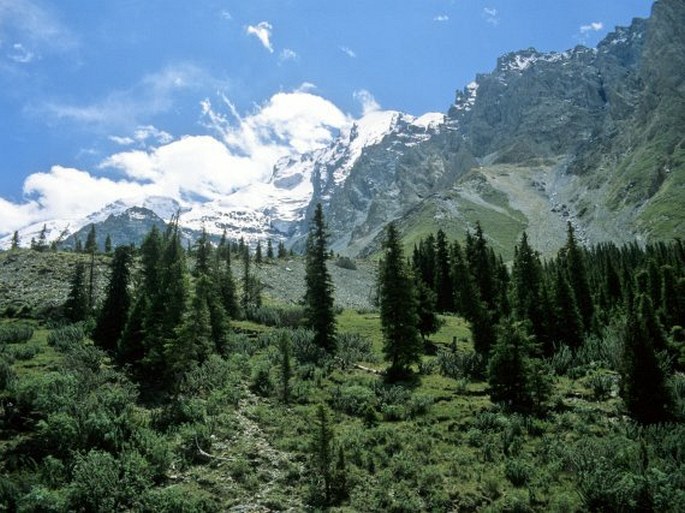
Description: Small erect shrub 0.5–1.5 m high, with relatively thick, firm branches; long shoots angled, relatively thick and almost straight, glabrous or pubescent, rarely villous-tomentose (var. xizangensis); buds ovoid, small, covered with several scales. Leaves alternate on long shoots (often with adjoining smaller leaves around a bud) or tufted on short shoots (brachyblasts) and bases of flowering branchlets (peduncles); leaf blades narrowly (ob)lanceolate to oblong-obovate, acute or obtuse, entire or very rarely with a few teeth along the upper margins, 6–20 × 2–6 mm, very narrowly cuneate and tapering towards the base almost without a petiole, with inconspicuous veins, glabrous, pubescent or rarely tomentose on both surfaces (var. xizangensis), glaucous on the upper (adaxial!) surface which resemble the reverse side. Inflorescences lateral on shoots from the previous year, forming small, dense, 10–30-flowered, simple corymbs 1–2 cm in diameter on short peduncles leafy around the base, together up to 3 cm long; pedicels 2–8 mm long, one-flowered. Flowers mainly in June to July, bisexual, 4–7 mm in diameter; sepals ovate-triangular, 1–2 mm long; petals white or rarely pinkish to purple-red (sometimes in var. xizangensis), obovate or suborbicular, 2–3 mm long; stamens nearly equaling petals. Follicles more or less divergent, 2–3 mm long, glabrous or pubescent along the inner suture, with styles subterminal or prolonging the dorsal suture.
Taxonomic notes: Spiraea alpina was described by P. S. Pallas from mountains near the Bajkal Lake in 1784. In Russian literature, Spiraea tianschanica is accepted as a separate species, described by A. Pojarkova from Terskey Alatau in today Kyrgyzstan in 1939. However, the alleged differences from the older taxon were given based on limited material and in fact they fall into the range of usual variation of the species. Two Chinese botanists, T. T. Yu and L. T. Lu, described a similar taxon from the central part of interior Tibet (Xizang) in 1980 under the name Spiraea tibetica. But this name was found to be illegitimate as a later homonym and thus the second author after twenty years established a new name, Spiraea xizangensis, for the same taxon. Also this taxon was described based on limited material and rather vague differences, from which the most important seemed to be bifacially pubescent leaves, pubescent to tomentose shoots and the pinkish to purple-red flower colour. However, neither the latter character is stable in the relevant populations. After a revision of available data and material, this Tibetan taxon, that which overlap Sikkim, was recently accepted as a variety of Spiraea alpina, i.e., Spiraea alpina var. xizangensis in a special study by Businský (in Phyton, Annales Rei Botanicae, 55, 1, 2015, p. 114).
Use: This species has a potential as an attractive small blossoming ornamental shrub in horticulture and will be suitable for introduction into culture as a very frost-resistant plant.
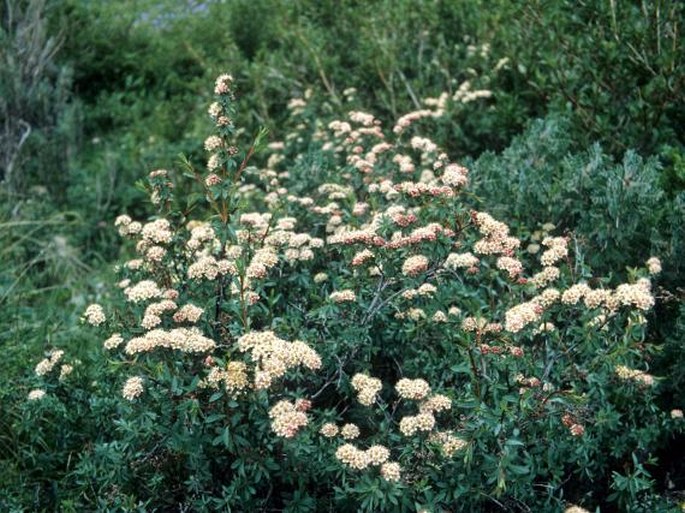
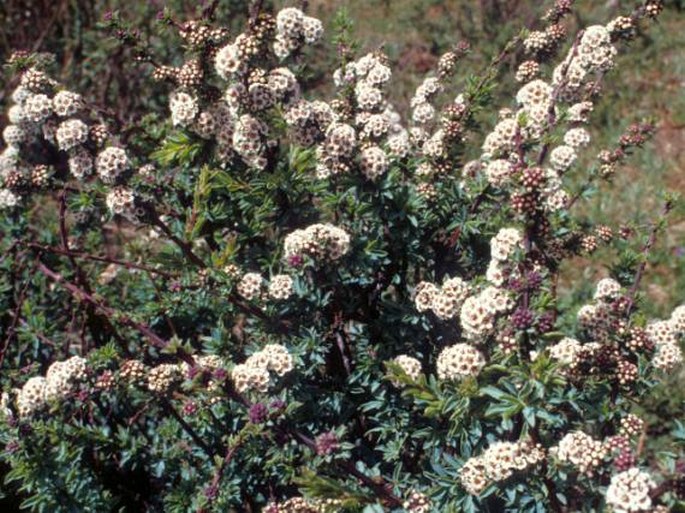
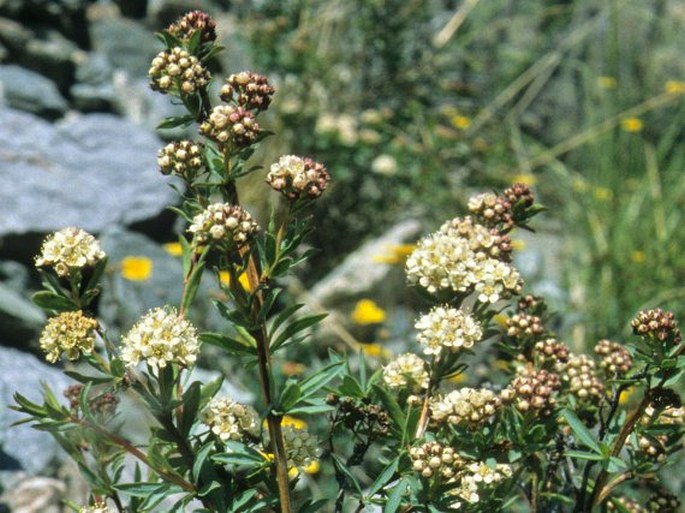
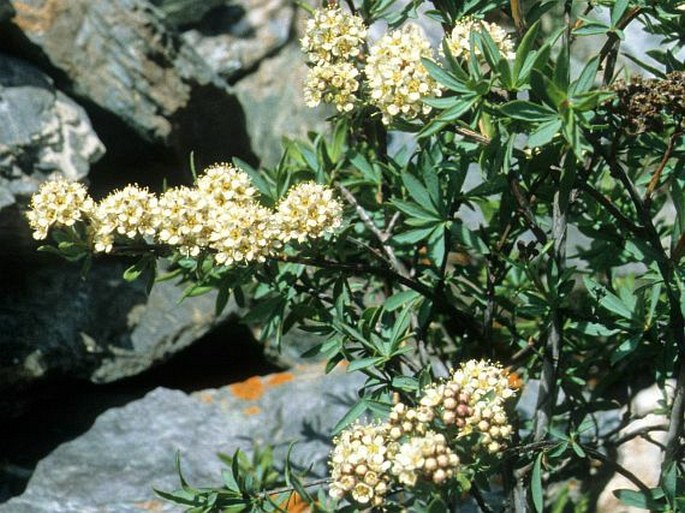
These images were taken in Kyrgyzstan, Tian Shan, Inylchek Valley (1989); China, Maniganggo Lake and south of Litang in western Sichuan (1992)


